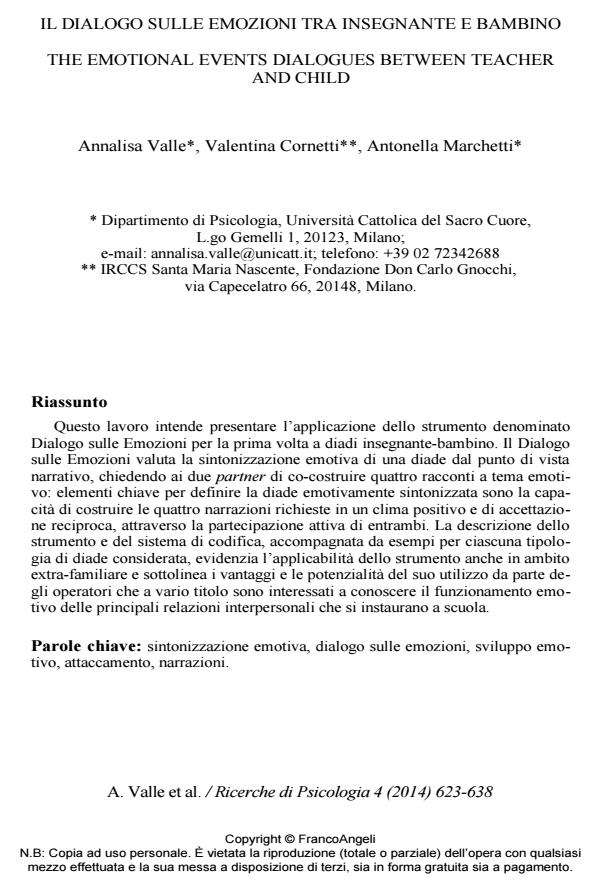The emotional events dialogues between teacher and child
Journal title RICERCHE DI PSICOLOGIA
Author/s Annalisa Valle, Valentina Cornetti, Antonella Marchetti
Publishing Year 2015 Issue 2014/4
Language Italian Pages 16 P. 623-638 File size 199 KB
DOI 10.3280/RIP2014-004006
DOI is like a bar code for intellectual property: to have more infomation
click here
Below, you can see the article first page
If you want to buy this article in PDF format, you can do it, following the instructions to buy download credits

FrancoAngeli is member of Publishers International Linking Association, Inc (PILA), a not-for-profit association which run the CrossRef service enabling links to and from online scholarly content.
This paper aims to present the application of the task named Emotional Event Dialogues for the first time in teacher-child dyads. The Emotional Event Dialogues evaluates the emotional matching of an adult-child dyad form the narrative perspective. The partners have to co-construct four stories with an emotional theme: the most important element to define an emotional matched dyad is the construction of four different stories developed with cooperation and mutual engagement of both partners. The description of the task and the coding system, accompanied by examples of each type of dyad considered, highlights the applicability of this task also in extra-family environment and highlights the benefits and potential of its use by operators who for various reasons are interested in knowing the emotional functioning of the main relationships that are established at school.
Keywords: Emotional matching, emotional events dialogues, emotional development, attachment, narratives
Annalisa Valle, Valentina Cornetti, Antonella Marchetti, Il dialogo sulle emozioni tra insegnante e bambino in "RICERCHE DI PSICOLOGIA " 4/2014, pp 623-638, DOI: 10.3280/RIP2014-004006